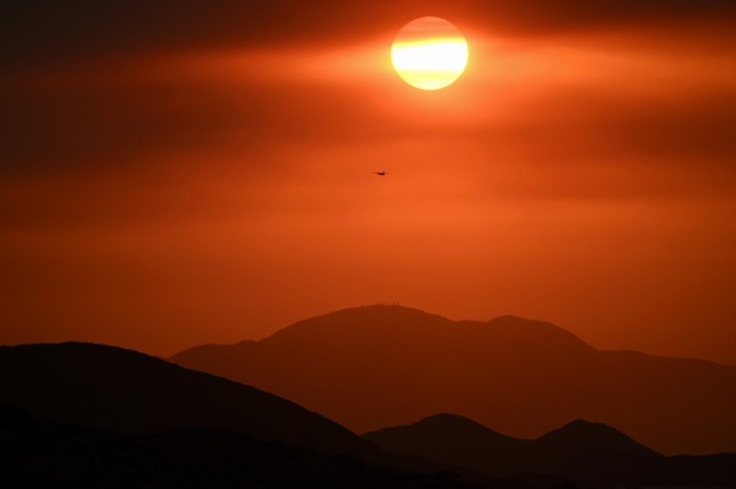
Mudslides, flooded roadways and power outages were just some of the effects experienced by California residents Monday morning, as a back-to-back atmospheric river hit the west coast.
In the Los Angeles area— including Hollywood Hills and Beverly Hills— about 1.4 million people were under flash-food warnings, expecting up to 9 inches of rain. The National Weather Service Advisory reported that more rain was to be expected during the day, calling these flooding and the threat of mudslides a "particularly dangerous situation"
Meanwhile, in Northern California, the storm inundated streets and brought down trees and electrical lines across the San Francisco Bay Area, the Associated Press reported. Gusts exceeding 80 mph (128 kph) were recorded in the mountains.
Atmospheric rivers are long and relatively narrow bands of water vapor that form over an ocean and flow through the sky, transporting much of the moisture from the tropic to latitudes up north. When it hits land, the vapor turns into heavy precipitation that falls as rain or snow. The incident in California is the latest episode of extreme weather conditions following a similarly chaotic January.
How will this affect Latinos in the area?
For one, Hispanics are the largest racial or ethnic group in California, a study by the Pew Research Center showed. In 2022, Latinos accounted for 40% of California's population, among the greatest shares in the country. Similarly, that year, there were about 15.7 million Hispanics in California, up from 14.0 million in 2010.
In Los Angeles County, one of the territories affected by the storms, Hispanics/Latinos make up about half of the territory's population at 4.9 million residents.
More importantly, however, Latinos in the U.S. face a disproportionately higher risk of flood compared to other demographics, a study by the Hispanic Access Foundation reported last year.
About 25% of Latinos in the U.S. live in a county that has experienced a federal disaster declaration for flooding in 2023, compared to 10% of non-Latinos who have been through this situation. At a national level, 44% of Latinos live in counties with high flood risks, in contrast with 35% of non-Latinos.
Language barriers, inadequate housing, or local governments that lack the capacity to fully implement solutions are some of the factors credited to these vulnerabilities.
The likelihood of being impacted by natural disasters is not the only thing affecting Latinos, and people of color in general, it is also the increased chances of being displaced.
In 2023, 21.8% of Latinos never returned to their homes following a summer of storms and extreme weather, compared to 12.1% of white people. At the same time, Black people and Latinos as well as adults of other or multiple races and ethnicities were vastly more likely to experience food shortages, lack of water and unsanitary conditions, among other effects of displacement.
Despite these stats, there are some possible solutions to these trends.
In their 2023 report, the Hispanic Access Foundation recommended addressing cultural barriers to accessing resources, improving disaster policies as a way to address the root causes of vulnerabilities and investing in risk-reduction strategies in places with high exposure and vulnerability.
"State and federal government agencies can help lower-capacity communities by providing them with technical assistance, helping to coordinate regional or watershed collaboratives, and providing long-term, predictable revenue for resilience investments," the foundation suggests.
© 2025 Latin Times. All rights reserved. Do not reproduce without permission.





